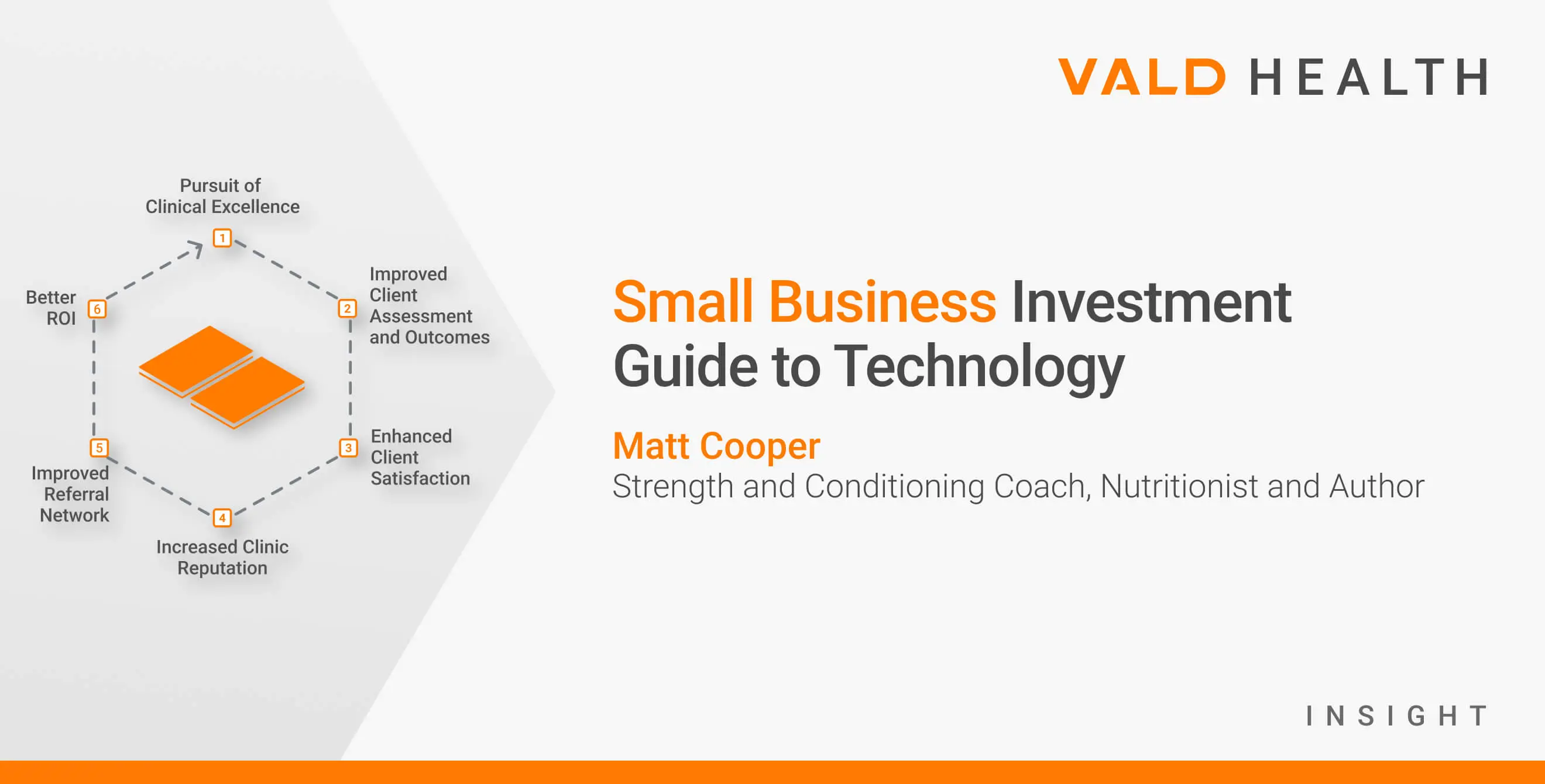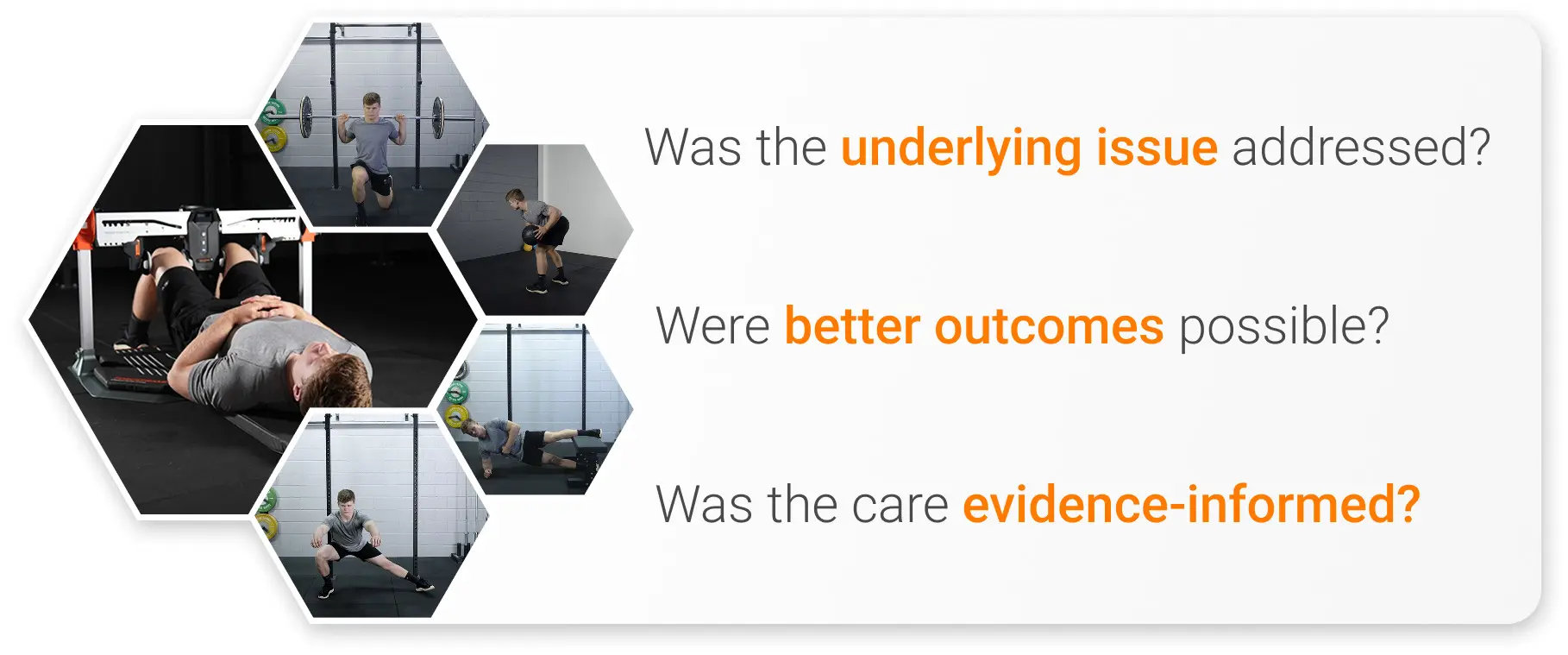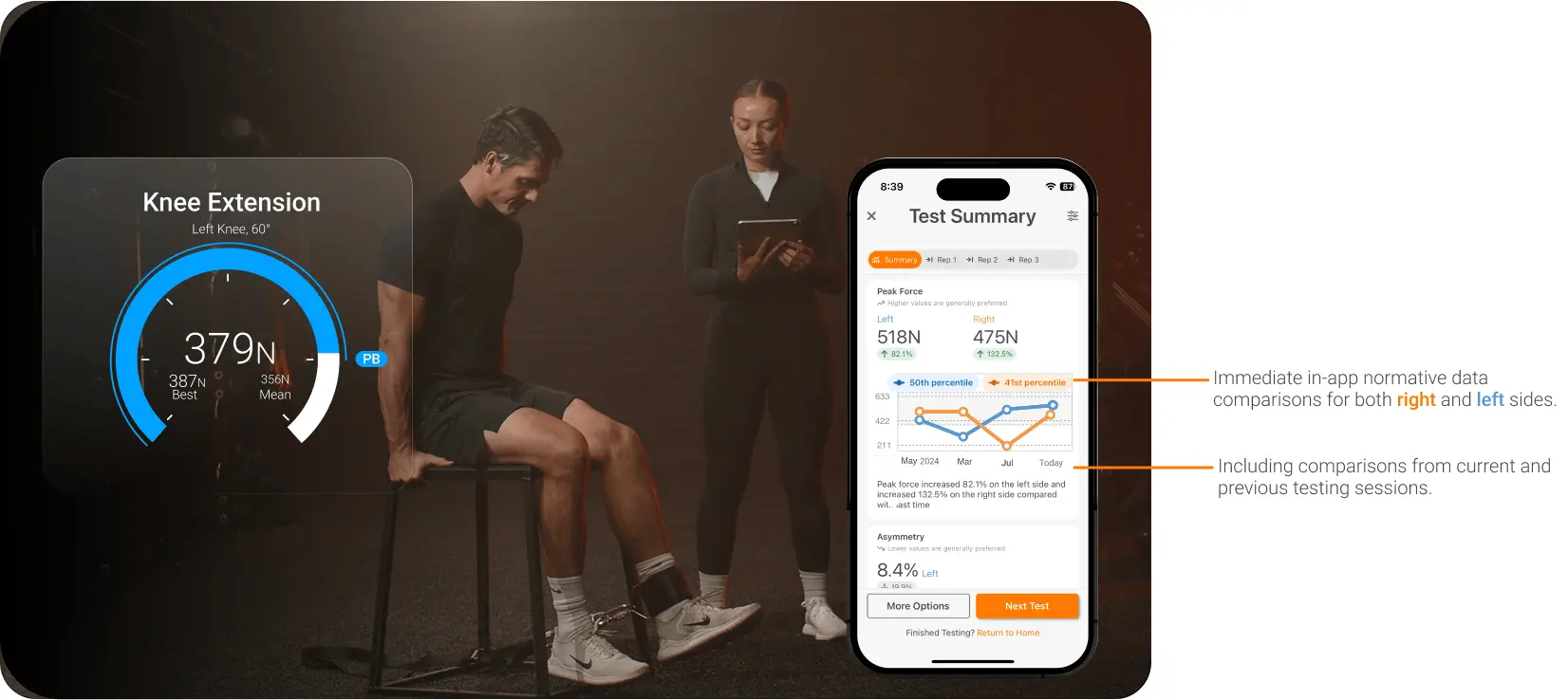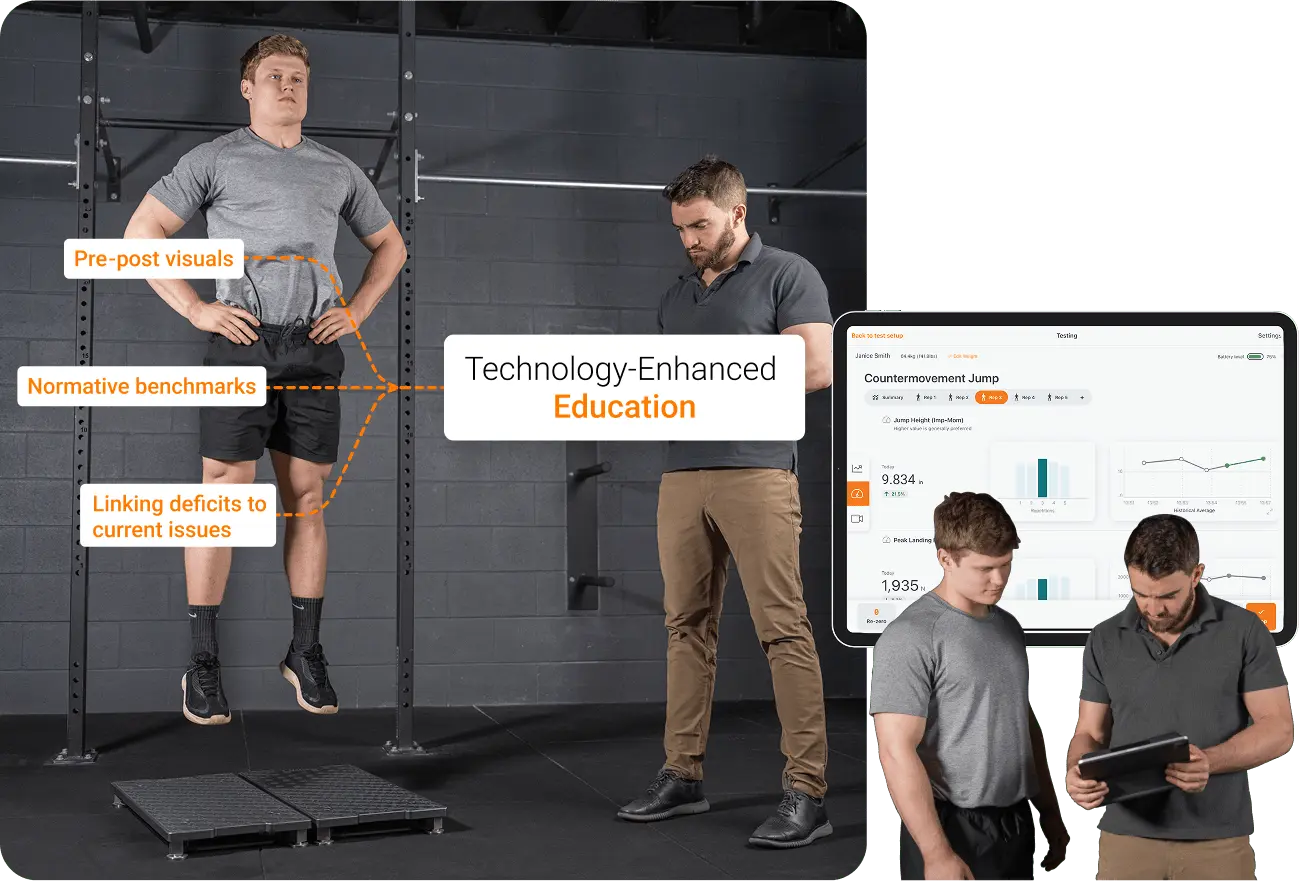Small Business Investment Guide to Technology
Available in:
EN
About the Author
Matt Cooper is a nutritionist, strength and conditioning coach and author in the health and performance space. Based in Los Angeles, he coaches clients both locally and internationally.
Building a Sustainable Business
In today’s sports performance and rehabilitation business landscape, practitioners face an increasingly challenging market. Clients have more options than ever, insurance reimbursements continue to tighten and the demand for measurable outcomes has never been higher. Scientists push the limits of clinical technology, while economists and marketers focus on profitability. As practitioners, our role is to bridge the gap – maximizing both application and return.
This article examines VALD technology through a business-first lens, focusing on two critical areas that directly impact the bottom line: service differentiation and scalable revenue streams.
The Commoditization of Traditional Services
Physical therapy and performance training have become increasingly commoditized. Clients often choose based on location, cost, insurance or general reputation – reducing complex services to simple checkboxes. This race to the bottom makes it harder for practitioners to justify premium pricing while competing with high-volume chains.
[The modern business landscape] makes it harder for practitioners to justify premium pricing while competing with high-volume chains.
Demonstration of how clients view training and rehabilitation as credence goods.
To most clients, a squat assessment at clinic A looks no different from one at clinic B. The nuances – expertise, attention to detail, clinical reasoning – are often invisible to the untrained eye.
The Perception Problem
Service-based businesses in sports performance and rehabilitation often deal with “credence goods” – services whose quality is hard to judge, even after use. A client may feel better after treatment, but they cannot know if the care was optimal or if better outcomes were possible elsewhere.
Credence Good
A product of service where the quality is difficult to assess after its use (e.g., physical therapy).

Considerations when assessing credence goods.
This perception problem creates a fundamental business challenge: how do you communicate your value proposition in a way that resonates with potential clients and justifies premium pricing? More importantly, how do you build client confidence before they experience your services?
Service Differentiation: The Objective Advantage
Objective measurement technologies help differentiate services by making clinical expertise visible and quantifiable. Showing clients their exact force outputs, asymmetries and progress tracking through tools such as MoveHealth shifts perception – from standard therapist to high-tech specialist who delivers measurable results.
Objective measurement technologies help differentiate services by making clinical expertise visible and quantifiable.
With the right positioning, this elevates the perceived value of your services.
Take a typical knee extension assessment. Manual muscle testing might label strength as “normal,” offering little distinction. However, showing a 14% knee extension asymmetry and comparing it to Norms transforms the experience into something more advanced and highly valued.

Client performing a knee extension assessment using DynaMo Max while the practitioner reviews his real-time results and normative data.
The Authority Positioning Effect
Objective technology does not just measure performance – it positions its users as authorities. Clients trust data, especially when it is presented clearly and professionally. Referencing specific metrics, comparing them to normative data – such as VALD’s Norms – and tracking progress over time turns subjective assessments into concrete, scientific insights. It becomes both a blueprint for progress and a “wow factor” that drives retention.
Referencing specific metrics, comparing them to normative data…and tracking progress over time turns subjective assessments into concrete, scientific insights.
This authority positioning directly impacts your business model. Clients who see you as an expert are more likely to do the following:
Creating Barriers to Competition
One of the strongest business advantages of adopting technology is the competitive barrier it creates. While others may claim expertise, few can match the value of objective data without similar investment.
This advantage grows over time as practitioners develop skills in setup, interpretation and communication, making the experience difficult to replicate. Once clients go through a multi-point, data-driven assessment, they are far less likely to leave, especially for a competitor who cannot offer the same insights.
…[after] a multi-point, data-driven evaluation, [clients are] far less likely to leave, especially for a competitor who cannot offer the same insights.
Premium Pricing Justification
For long-term business sustainability, objective technology helps justify premium pricing. When clients see that they are receiving advanced assessments unavailable elsewhere, price sensitivity drops.
Demonstration of extra value, and therefore pricing justification, for technology-enabled services.
The practitioner’s role is to position the technology not as an add-on, but as part of a superior standard of care. Rather than offering subjective assessments, elite practitioners deliver a more precise, data-driven experience – one that enhances decision-making and elevates clinical quality.
The Natural Upselling Pathway
Objective assessment technology creates natural, “non-salesy” opportunities for service expansion. When data reveals deficits or asymmetries, the next step is logically targeted intervention.
Technology has the ability to change clients’ perspectives on areas they can improve.
For instance, ForceDecks can identify asymmetries that signal injury risk – prompting discussions around tailored training to address those issues. Instead of trying to sell more services, technology-enabled providers offer solutions to clearly defined problems.
Instead of trying to sell more services, technology-enabled providers offer solutions to clearly defined problems.
Tiered Service Models
VALD technology supports tiered service models that boost average revenue per client. Practitioners can offer entry-level options like initial assessments with self-guided or remote-guided programs via MoveHealth, mid-tier packages with periodic reassessments and program updates or higher-tier models with continuous monitoring and real-time feedback for program optimization.
Each tier delivers real value while encouraging natural client upgrades as engagement grows.
A common pitfall is reserving tech-enabled assessments for only the highest tier. This can limit buy-in. Instead, embedding technology across all tiers gives every client a premium experience from day one – driving retention and long-term value.
…embedding technology across all tiers gives every client a premium experience from day one – driving retention and long-term value.
Subscription-Based Revenue Streams
Objective technology creates strong opportunities for subscription-based revenue models, offering predictable income, improved cash flow and higher business valuation compared to traditional fee-for-service. These revenue models are especially effective in health and performance settings for several reasons:
- Clients value ongoing monitoring.
- Objective data justifies recurring fees.
- Progress tracking requires regular assessments.
- Larger datasets enable better comparative insights.
Similar to gym memberships, these models support retention – but with premium service and measurable results, they can also command higher price points.

Corporate and Team Contracts
Objective assessment technology opens doors to high-margin corporate wellness and team partnerships by providing the measurable outcomes organizations increasingly expect.
…[through] baseline screening, injury risk profiling, ongoing monitoring and demonstrated ROI…business contracts [are] a strong and stable growth channel.
These clients value baseline screening, injury risk profiling, ongoing monitoring and demonstrated ROI – making business contracts a strong and stable growth channel.
Implementation Strategy: Maximizing Business Impact
The business impact of technology relies on clear client communication. Practitioners must translate technical data into meaningful stories that align with client goals. Without context, data loses its power.
Key communication strategies include the following:
- Before-and-after visuals showing progress
- Benchmarking against normative data
- Linking deficits to injury risk or performance issues
- Highlighting value delivered for cost incurred

Practitioner testing and explaining results to the client.
When the technology is sound, the difference between it being a nice add-on or a core business driver lies in how well its value is communicated to the client.
Long-Term Business Considerations
Investing in technology positions a business as forward-thinking and committed to best practice. As objective assessment becomes standard, early adopters will have built expertise and client trust that late adopters may struggle to match.
The technology ROI cycle.
With the technology landscape evolving quickly, practitioners who lead today will be best equipped to adopt future innovations and sustain a competitive edge.
Return on Investment
As a practice sharpens its expertise and earns client trust, its position becomes increasingly difficult for competitors to replicate. Early adoption allows practitioners to become the go-to technology expert in their market – creating a defensible position against competition and economic shifts.
For small businesses, the ROI goes beyond direct revenue. Technology streamlines operations, reduces admin time and improves service delivery – all of which translate into higher client retention and more referrals. It also creates new revenue opportunities through differentiated offerings, partnerships and long-term client relationships built on trust and measurable outcomes.
VALD Calculators help practitioners understand basic requirements to achieve ROI for technology investments.
Conclusion: Strategic Investment for Sustainable Growth
Investing in VALD technology is more than an upgrade – it is a strategic move that can reshape a practice’s competitive position, revenue model and long-term sustainability. With objective differentiation, pricing justification and new revenue streams, technology’s value extends well beyond the initial cost.
As sports performance and rehabilitation shift toward data-driven, outcome-based models, practices that lead this evolution will be best positioned to thrive.
As sports performance and rehabilitation shift toward data-driven, outcome-based models, practices that [implement technology] will be best positioned to thrive.
Objective assessment is quickly becoming standard in high-quality care. For those looking to rise above commodity competition, VALD technology offers a proven path to growth – advancing both client outcomes and business success through better results, seamless integration and clear communication.
If you are interested in learning how VALD’s human measurement technology can support your clinic in delivering better client outcomes, increasing retention and maximizing ROI through seamless integration into your practice, explore our Practitioner’s Guide to ROI or get in touch with us.
